
The First Fifty Years – Part Two
With the three ‘Sovereign’ class ships and Nordic Empress enjoying great success in their markets, and the itinerary alterations made for the smaller vessels having a good effect, Royal Caribbean announced a net income of $20.2 million on revenues of $270.4 million for the first quarter ended 2nd April 1993, compared to net income of $4.4 million on revenues of $215.2 million for the same quarter of 1992. The revenue increase was in part attributed to a 203% increase in passenger cruise days following the introduction of Majesty of the Seas in April 1992 and improved fleet yields resulting from the implementation of yield management programs.
As a result, Royal Caribbean Cruise Line’s initial public offering in April 1993 of 10 million shares of common stock, or 16.2% of its total stock, at $18 a share, generated gross proceeds of $180 million, and net proceeds to the company of $168 million. The two owners, Anders Wilhelm & Co. and the Pritzker family, reduced their holdings to 41% each, and the funds raised were used to repay debt and enable a further expansion of the fleet. At the same time the company stated they had no intention of selling any of their current ships.
For several years Royal Caribbean had been operating their oldest and smallest ships outside its traditional cruising area in the Caribbean, including Mexico, Alaska and Europe, but had not built a ship specifically designed for worldwide cruising. With this in view, the company had developed ‘Project Vision’ to design a series of up to six ships that could be used in any part of the world. The ‘Vision’ class would be the most luxurious ships Royal Caribbean had yet built, with bigger cabins, more space per passenger and a wider variety of public areas and open decks. They would also follow the new naming system introduced with Sovereign of the Seas.
An order was placed with Chantiers de l’Atlantique for a pair of 70,000 gross ton ‘Vision’ class liners that would accommodate 1,800 passengers. To be built at Saint Nazaire, the first would be delivered in April 1995 and named Legend of the Seas, to be followed in April 1996 by Splendour of the Seas. There was also an option for a third ship to be built which, if taken up, would be delivered in 1997.
Early in 1994, an order was placed for another pair of ‘Vision’ class vessels, but they were to be built in the former Wartsila shipyards in Finland by Kvaerner Masa. This second pair would be slightly larger than the ships being built in France at 73,000 gross tons and of a different overall design, though the general layout would be the same.
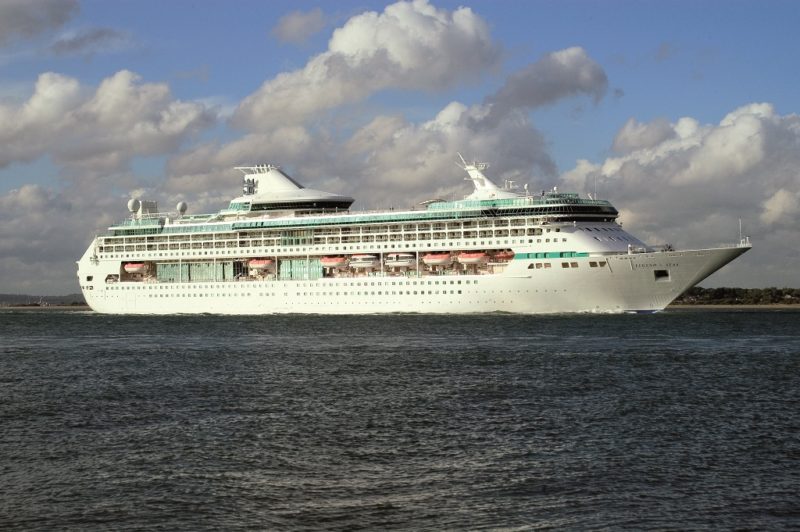
Despite the assertion made in 1993 that none of their smaller ships would be sold, in October 1994 it was announced that Nordic Prince had been sold to Airtours, one of the largest British package tour operators, with delivery in March 1995. Nordic Prince had been scheduled to make 10 and 11 day cruises to Alaska in the summer of 1995, but Royal Caribbean Chairman Richard Fain said the $55 million offered by Airtours was too good to pass up. As a result of the sale, the summer season of cruises in the Mediterranean that had been scheduled for Sun Viking was cancelled, and that ship took over the Nordic Prince Alaskan schedule, leaving Song of Norway as the only Royal Caribbean ship operating in Europe in the summer of 1995.
After a final season of cruises to Mexican ports, in February 1995 Nordic Prince went to a shipyard in Baltimore to have the Viking Crown Lounge removed. “The Viking Crown Lounge has been a trademark on all Royal Caribbean ships and removing it before the sale reinforces the value we place on this hallmark of Royal Caribbean cruise vacationing”, Richard Fain said. Nordic Prince was then handed over to Airtours, and commenced cruising in the Mediterranean for Sun Cruises, a newly formed subsidiary of Airtours, having been renamed Carousel.
The gap left in the Royal Caribbean fleet by the sale of Nordic Prince was quickly filled by the first of the new ‘Vision’ class ships, Legend of the Seas, being delivered on 28th April 1995. Legend of the Seas left France for North America, but some of the larger public rooms were still not finished, and very bad weather prevented work being done during the Atlantic crossing. A promotional visit to Boston was cancelled, and the ship went directly to New York, but three overnight introductory cruises also had to be cancelled to enable the interior work to be completed.
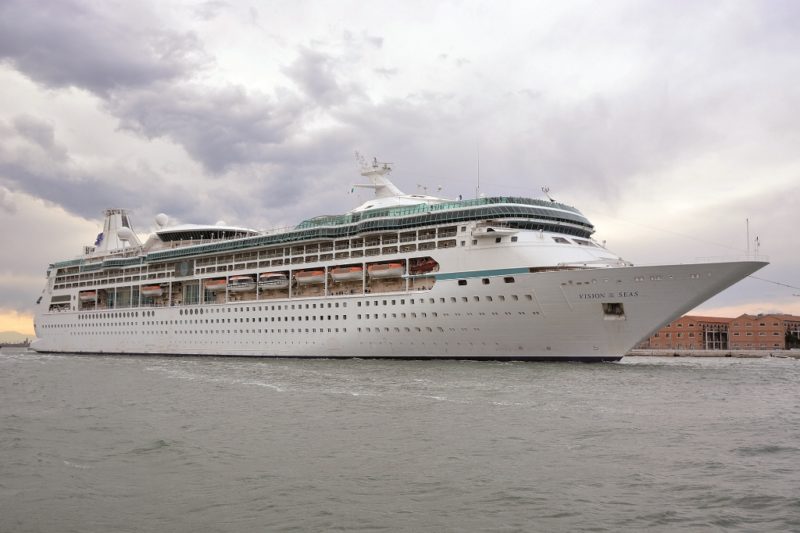
The 69,130 gross ton Legend of the Seas could accommodate a maximum of 2,064 passengers, the 904 cabins included 231 with verandahs. The vessel was fitted with a number of new features, including an 18 hole mini-golf course and an adults only indoor/outdoor pool area, the Solarium, in the style of a Roman bath. A top speed of 24 knots could be achieved, making it the fastest cruise ship built since Queen Elizabeth 2 in 1969. Because the engines and funnel were situated midships, the Centrum atrium soared up through seven decks, all the way to the trademark Viking Crown Lounge, located for the first time on the forward side of the funnel.
Legend of the Seas left New York on 9th May, without passengers, for Miami, where an official naming ceremony was held, and on 16th May departed on its maiden cruise, through the Panama Canal to Los Angeles, then on to Vancouver for a summer season of cruises to Alaska. In September, Legend of the Seas made the first Royal Caribbean cruise to Hawaii, departing Vancouver and terminating at Ensenada in Mexico. This was followed by a winter season of cruises through the Panama Canal between Acapulco and San Juan.
Following the delivery of Legend of the Seas, the option for the construction of a third ship by the French yard was taken up, though it would be an enlarged version of the first pair, to be named Rhapsody of the Seas In addition, an order was placed for a fourth ship, identical in size to the third vessel, and although it would be the last of the ‘Project Vision’ ships to be built, it would be named Vision of the Seas.
The sudden removal of Nordic Prince from the Royal Caribbean fleet had resulted in Sun Viking spending the summer of 1995 cruising to Alaska instead of in Europe, but the plan to have that ship move to Asia went ahead. However, instead of taking the short route across the Pacific, Sun Viking departed Vancouver on 6th September on a 92 day odyssey that went down the west coast of North America, through the Panama Canal and into the Mediterranean. Sun Viking departed Piraeus on 8th November on a 29 night repositioning voyage to Singapore, becoming the first Royal Caribbean ship to pass through the Suez Canal, and commenced year-round cruises to ports in South East Asia, China and Japan in January 1996.
The second ‘Vision’ class ship built in France was delivered as Splendour of the Seas on 15th March 1996, being the first Royal Caribbean ship designed specifically for the European market, making promotional visits to Amsterdam and Hamburg before arriving at Southampton on 28th March. Next day an official naming ceremony was performed by Mrs Lise Wilhelmsen, wife of major stockholder Anders Wilhelmsen. On 31st March, Splendour of the Seas departed Southampton on its first cruise, to Barcelona, from where a series of Mediterranean cruises were operated. The vessel then returned to Britain for a summer series of cruises from Harwich to the Baltic and Norwegian Fjords, and also around Britain.
The final four ‘Vision’ ships differed from the first pair by being longer, 279m, and having their funnels at the stern, though the Viking Crown Lounge remained towards the centre of the ship at the top of the Centrum atrium. The first of the pair being built in Finland, Grandeur of the Seas, was delivered on 20th November 1996, and could carry a maximum of 2,440 passengers in 975 cabins. Following an official naming ceremony on 13th December at Miami, Grandeur of the Seas departed next day on its maiden cruise to the Caribbean.
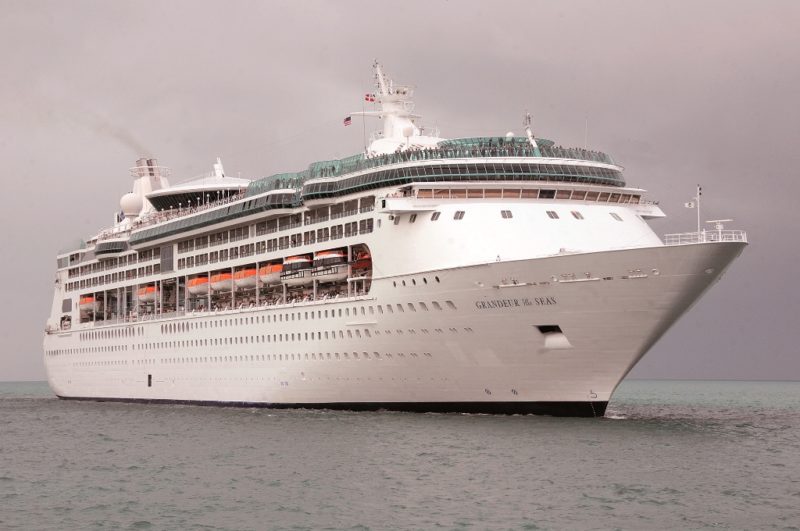
Although Royal Caribbean was in the process of adding six ‘Vision’ class ships to their fleet in three years, the company was already looking ahead, with ‘Project Eagle’. Late in 1996 a contract was signed with the Kavaerner-Masa shipyard at Turku in Finland for the construction of two 130,000 gross ton cruise ship with 3,100 lower berths, to be delivered late in 1999 and 2000 as the largest cruise ships in the world.
1997 would see Royal Caribbean undergo several changes, beginning with the sale of Song of Norway to Airtours for $40 million. On 16th February, Song of Norway berthed in Miami at the end of its final cruise for Royal Caribbean, then had the Viking Crown Lounge removed before being handed over to the new owners. During a refit more cabins were installed before the ship was renamed Sundream and on 4th May joined its sister operating for Sun Cruises in the Mediterranean.
On 22nd April 1997, the third ‘Vision’ class ship built by Chantiers de l’Atlantique was delivered as Rhapsody of the Seas. While of similar design and size to Grandeur of the Seas, Rhapsody of the Seas was fitted with 1,007 cabins and could accommodate a maximum of 2,435 passengers. After operating two introductory three-day cruises from New York, Rhapsody of the Seas went to Miami, departing on 19th May on a cruise through the Panama Canal and up the west coast to Vancouver to commence a season of cruises to Alaska.
The second ‘Vision’ class ship built in Finland, Enchantment of the Seas, was handed over to Royal Caribbean on 4th July 1997, and departed for Southampton, arriving there on 8th July. Identical in size and accommodation to Grandeur of the Seas, following a naming ceremony the vessel departed on 12th July for a special overnight familiarisation cruise, then left Southampton on 13th July on a positioning cruise to Barcelona, from where a series of Mediterranean cruises were operated. Meanwhile, on 7th July Splendour of the Seas had arrived in Harwich from Barcelona for a second season of 12 day cruises to the Baltic and Norwegian Fjords, and also around Britain.
In early 1997 the name of the fleet was changed to Royal Caribbean International, with the parent company being renamed Royal Caribbean Cruises Ltd. When it became known that Celebrity Cruises was for sale, Royal Caribbean Cruises Ltd. made a US$500 million offer, and on 17th June it was announced that they would be acquiring Celebrity. However, on 23rd June a US$510 million bid was made by Carnival Cruise Line, so Royal Caribbean raised their offer to US$515 million, which Carnival countered with a bid of US$525 million. However, on 2nd July an agreement was reached with Royal Caribbean under which Celebrity Cruises would continue to operate as a separate entity and their ships would not be renamed.
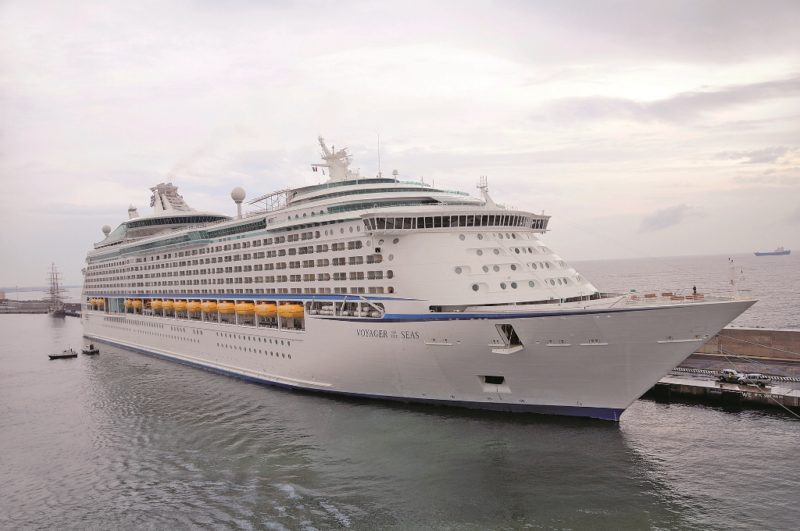
Celebrity Cruises had been founded in 1988 by the Chandris organisation as an up-market operator, and commenced operations in April 1990 with one upgraded ship, Meridian, soon joined by a new ship, Horizon. One of the prime assets of Celebrity Cruises was the two ten year contracts they held with the Bermuda Government, on which Meridian and Horizon operated for about six months each year, spending the rest of the year in the Caribbean. In 1992 a sister to Horizon had entered service as Zenith, operating year-round in the Caribbean.
In November 1995 Celebrity Cruises took delivery of the first of three ‘Century’ class vessels, which was named Century. The second ‘Century’ class vessel, named Galaxy, commenced its maiden cruise from Fort Lauderdale in December 1996, while the third ‘Century’ class ship, named Mercury, would be delivered in November 1997. The three ‘Century’ class ships would operate to the Caribbean from Fort Lauderdale throughout the year.
Royal Caribbean announced that Meridian would be withdrawn in October 1997 and offered for sale. It was purchased by Metro Holdings, a company based in Singapore, being renamed Sun Vista. Soon after, Sun Viking was also sold to a Singapore based company, Star Cruises, for $30 million, being handed over to them in January 1998 and renamed SuperStar Sagittarius. In this instance, the Viking Crown Lounge was not removed.
However, orders were placed for two new series of four ships each, both to be powered by gas turbines. The 85,000 gross ton ‘Millennium’ class for Celebrity Cruises would be built in France, while the 90,000 gross ton ‘Radiance’ class would be built in Germany for Royal Caribbean.
The highlight of 1998 for Royal Caribbean was the delivery at Saint Nazaire on 15th April of the last ‘Vision’ class ship, Vision of the Seas, which was identical to Rhapsody of the Seas. The new ship arrived in Southampton two days later, a naming ceremony was held on 26th April, and the vessel then made a series of short promotional cruises before departing on 2nd May for Barcelona to commence a season of cruising in the Mediterranean. Meanwhile, in June Splendour of the Seas commenced a third season of cruises out of Harwich.

In the summer of 1997, Meridian and Zenith had operated for Celebrity Cruises from New York to Bermuda under Government contracts, while Horizon had spent the summer in the Alaskan market out of Vancouver. However, the sale of Meridian meant Celebrity needed a ship to operate their second Bermuda contract in 1998, so Horizon returned to the Bermuda trade after a one year absence, operating the same itinerary as Meridian had followed. As Royal Caribbean also held one of the five contracts with the Bermuda Government utilising Song of America, this meant the Royal Caribbean organisation had a monopoly in this trade over the peak summer period.
After making an unscheduled call to evacuate a sick passenger at Philipsburg, St. Maarten on 15th December 1998, Monarch of the Seas grazed a reef while departing, opening a 40m long gash along the starboard hull. The ship started taking on water and was intentionally grounded on a sandbar to prevent it sinking, and all passengers were evacuated. The ship was drydocked for three months at Atlantic Marine in Mobile, Alabama, for repairs, including replacing 460 tons of shell plating and 18 miles (29km) of electrical wiring.
Royal Caribbean sold Song of America to Airtours for $95 million, and she was handed over to them in May 1999. Renamed Sunbird, she joined the former Nordic Prince and Song of Norway cruising in the Mediterranean. Royal Caribbean needed a ship for their 1999 Bermuda contract, and this was taken over by Nordic Empress. Royal Caribbean also offered Viking Serenade for sale, but there was no interest and the vessel continued to cruise out of Los Angeles.
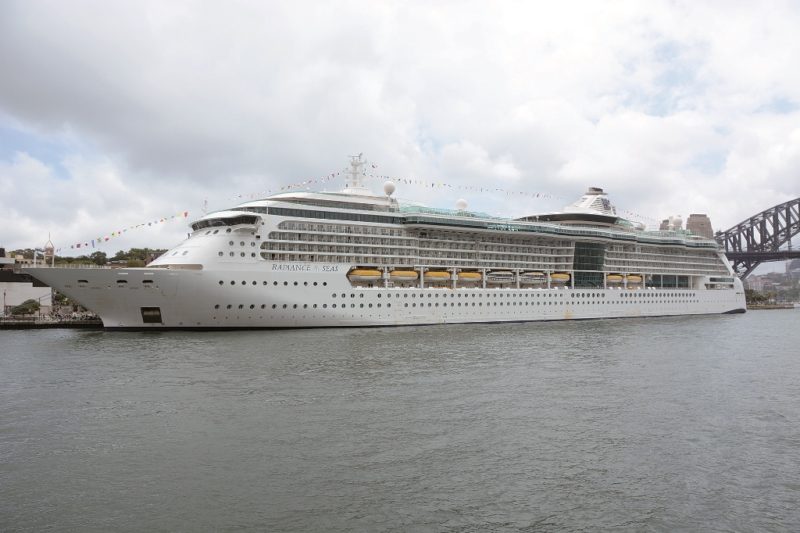
The introduction of new ships to the Royal Caribbean fleet continued in 1999, with the first of the ‘Project Eagle’ ships, now known as the ‘Voyager’ class, being delivered in Finland on 29th October as Voyager of the Seas. At 137,276 gross tons, Voyager of the Seas was the largest passenger ship in the world, with accommodation for 3,114 passengers in 1,557 staterooms, 939 of which had an ocean view, 707 with balconies, and 618 interior staterooms.
Voyager of the Seas introduced many new features, including a 900 seat concert arena that doubled as an ice skating rink, a rock-climbing wall, an in-line skating track, and two atriums, each eleven decks high. The outstanding feature was four-deck high Royal Promenade, running through the centre of the ship with shops and bars on each side, and a number of inside cabins with windows overlooking it. On 21st November, Voyager of the Seas departed Miami on its maiden cruise, operating weekly departures to Labadee, Ocho Rios in Jamaica and Cozumel, on the Yucatan Peninsula in Mexico.
On 6th November 1999, Legend of the Seas departed Piraeus on a 175 day odyssey described by Royal Caribbean as the ‘world’s longest cruise’, with stops at over 50 ports in 18 countries, including a number the company had not been to previously, including Australia and New Zealand. Legend of the Seas called at Darwin, Cairns and Brisbane and made two visits to Sydney, on 19th December 1999 and 23rd January 2000, with a cruise to New Zealand and return in between. Legend of the Seas would return to Australia in January 2001 for a short series of summer cruises, which were repeated over the next few years.
During 2000 the expansion of the Celebrity Cruises fleet began in May with the delivery of the 90,228 gross ton Millennium, which spent the summer cruising out of Amsterdam. In September the second ‘Voyager’ class vessel, Explorer of the Seas, was delivered to Royal Caribbean, and after a naming ceremony in New York on 21st October, it went to Miami to commence service on 28th October. Being slightly larger than its sister, Explorer of the Seas became the largest cruise ship in the world.
New ships continued to join the fleet in 2001, starting with the 90,090 gross ton Radiance of the Seas, the first of the gas-turbine powered series being built in Germany by Meyer Werft. A naming ceremony was held at Fort Lauderdale on 6th April, and next day the vessel departed on a cruise through the Panama Canal to Los Angeles, then to Vancouver for a season of cruises to Alaska.
The third in the ‘Voyager’ class, Adventure of the Seas, was delivered on 26th October, made a promotional visit to Boston, and on 10th October became the first cruise ship to call at New York after the tragic events of 11th September. Following a christening ceremony, Adventure of the Seas departed on a 2 night ‘appreciation cruise’ for firemen, police and relief workers involved in the World Trade Centre after the terrorist attacks, and their families. On 18th November, the vessel departed San Juan on its first commercial cruise.
In the middle of 2001, Royal Caribbean secured a 20% interest in the British tour operator, First Choice Holidays, and formed a new joint venture, Island Cruises. Having failed to find a buyer for Viking Serenade, the vessel completed its final cruise for Royal Caribbean in Los Angeles on 1st February 2002 and was transferred to Island Cruises. Renamed Island Escape, the vessel commenced cruising in the Mediterranean, primarily for the British market.
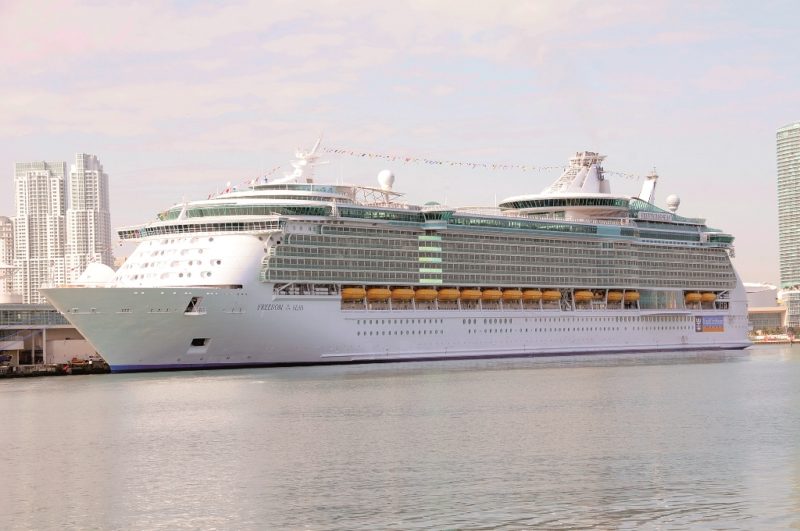
In May 2001, Peter Ratcliffe, managing director of P&O Princess Cruises, had telephoned Richard Fain, Chairman and CEO of Royal Caribbean, and proposed that the two companies should discuss a possible merger. On 20th November 2001, a merger was announced, with Royal Caribbean Cruises Ltd. holding a 49.3% interest in a new company that would operate 41 vessels, making it the largest cruise organisation in the world.
However, Carnival responded with a counter offer, which initiated several rounds of competitive manoeuvring from the two American companies, during which the P&O Princess board continued to favour a merger with Royal Caribbean, but many shareholders supported the Carnival offer. The turning point was an Extraordinary General Meeting called by P&O Princess on 14th February 2002 to approve the final Royal Caribbean offer. On the eve of the meeting Carnival increased its offer above that of Royal Caribbean, and after several hours the meeting was closed without a vote when the majority of shareholders indicated they favoured the Carnival offer, which was eventually accepted by the P&O Princess board.
Despite the failure of the P&O Princess merger bid, Royal Caribbean continued to enlarge their fleet with more new ships. Brilliance of the Seas, second in the ‘Radiance’ class, entered service in July 2002, and a fourth ‘Voyager’ class vessel was delivered on 18th November 2002. Navigator of the Seas was 138,279 gross tons, making it the largest cruise ship in the world, departing Miami on 14th December on its maiden cruise. The fifth and last ‘Voyager’ class ship, Mariner of the Seas, was added in October 2003, and the final two ‘Radiance’ class ships also joined the fleet, Serenade of the Seas in July 2003, and Jewel of the Seas in April 2004. The following month, Nordic Empress was renamed Empress of the Seas, giving Royal Caribbean a fleet of 19 modern ships sharing a corporate naming system, while Celebrity had a fleet of eight ships, and there was one ship with Island Cruises.
The only change to the Royal Caribbean fleet in 2005 was having Enchantment of the Seas lengthened by 21 metres, increasing passenger capacity to 2,750. In October 2005, Horizon was transferred from Celebrity Cruises to Island Cruises and renamed Island Star. However, in April 2006 Royal Caribbean took delivery of the first of a new class of ships being built in Finland, Freedom of the Seas, which, at 154,407 gross tons reclaimed the title of largest cruise ship in the world for the company from Queen Mary 2. The second ship in the class, Liberty of the Seas, entered service in April 2007, being joined by the third sister, Independence of the Seas, in April 2008.
During this period, Royal Caribbean had further expanded their organisation with the purchase in August 2006 of the Spanish company, Pullmantur, which had been operating a fleet of six ships at that time. However, plans were soon announced to transfer Zenith from Celebrity Cruises to Pullmantur in 2007, with two of their smaller ships, Blue Dream and Blue Moon, to be transferred to Celebrity and be renamed Celebrity Quest and Celebrity Journey. However, on 4th May 2007 Royal Caribbean formed an entirely new subsidiary, Azamara Cruises, to operate these ships as Azamara Quest and Azamara Journey.
In August 2007, through Pullmantur, Royal Caribbean formed another subsidiary, Croisieres de France, aimed at the French market, to which two ships were transferred from Pullmantur in 2008. To replace them, Empress of the Seas was transferred from Royal Caribbean to Pullmantur in March 2008, being renamed Empress, with Sovereign of the Seas joining the Spanish operator in November 2008 as Sovereign.
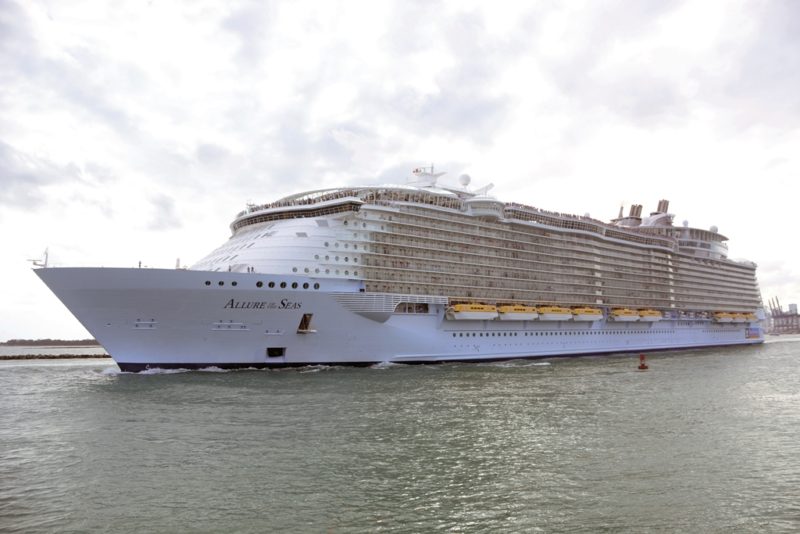
Also in 2008, a new joint venture between Royal Caribbean and the German tourism company, TUI AG, resulted in the formation of TUI Cruises, in which each company held a 50% share. In March 2009, Celebrity Galaxy was transferred to become the first TUI ship, being renamed Mein Schiff, which was amended to Mein Schiff 1 in May 2010 when Celebrity Century joined the TUI fleet as Mein Schiff 2. Subsequently TUI began a program of building ships to expand their fleet.
Meanwhile, Royal Caribbean had been working on ‘Project Genesis’, to produce the largest passenger liner yet built. As the chief executive of Royal Caribbean, Richard Fain, said, “We made the ship 50 per cent bigger than anything we’ve ever done, in fact any other cruise ship out there, because we had so many things we wanted to do”. An order was placed in February 2006 with the STX Europe Turku Shipyard in Finland, where work commenced on 11th December 2007. The name of the ship, Oasis of the Seas, resulted from a competition held in May 2008, and it was floated out of the building dock on 21st November 2008.
When delivered to Royal Caribbean on 28th October 2010, Oasis of the Seas was 225,282 gross tons, 360m long and 65m wide, capable of carrying 5,400 passengers in double occupancy in 2,698 cabins, or a maximum of 6,296. The ship had seven distinct ‘neighbourhoods’ spread over 16 decks, and a split superstructure, with the 5-deck high Central Park and Boardwalk outdoor areas running down the middle of the ship, featuring tropical gardens, restaurants, shops, and a working carousel. Oasis of the Seas entered service from Fort Lauderdale on 1st December 2009, operating weekly cruises to the Caribbean. By then work was well under way on an identical sister, delivered to Royal Caribbean on 28th October 2010 as Allure of the Seas, and it departed Fort Lauderdale on its maiden 7 day cruise exactly a year after Oasis of the Seas.
Monarch of the Seas ended its career with Royal Caribbean at Port Canaveral on 29th March 2013, and was transferred to Pullmantur, its name being shortened to Monarch. Meanwhile, work was proceeding on the construction of a new class of ships at the Meyer Werft yard in Germany, and on 28th October 2014 the first, Quantum of the Seas, was handed over to Royal Caribbean. The ‘Quantum’ class introduced a number of new features, most notably the first ever sky-diving simulator at sea and the North Star, a jewel shaped capsule that gently ascends over 300 feet above sea level.
At 168,666 gross tons Quantum of the Seas was the third largest cruise ship in the world and could carry a maximum of 4,905 passengers in 2,090 staterooms, 1,570 with a balcony. Quantum of the Seas arrived at Southampton on 29th October, and after a naming ceremony made two overnight cruises before departing on 2nd November to cross the Atlantic to New York for a winter season of cruises before repositioning to Shanghai in May 2015 to enter the China market for which it had been designed.
The second vessel in the ‘Quantum’ class, Anthem of the Seas, was delivered by Meyer Werft on 10th April 2015, and given an official naming ceremony at Southampton on 20 April. It was based in Southampton during the summer, then moved to New York for a winter season of cruises to the Caribbean.
In November 2014 Royal Caribbean had announced that Majesty of the Seas would be transferred to Pullmantur in April 2016, but this decision was reversed in July 2015 and the vessel remained in the Royal Caribbean fleet. In February 2016 Empress was transferred from Pullmantur back to Royal Caribbean, again being named Empress of the Seas. At this time the Pullmantur subsidiary, Croisieres de France, was amalgamated with the parent company,
Two more new ships joined the fleet in 2016, the third ‘Quantum’ class ship, Ovation of the Seas, in April with the 226,963 gross ton Harmony of the Seas, the first in the ‘Oasis-plus’ class, being delivered in May and becoming the largest cruise ship in the world. With the arrival of these new ships, the two oldest ships in the fleet were transferred, the first being Splendour of the Seas which went to TUI and was renamed TUI Discovery in April 2016. This was changed to Marella Discovery in 2017 when another subsidiary company was formed, Marella Cruises. In March 2017 Legend of the Seas was also transferred to Marella Cruises, being renamed Marella Discovery 2. On 10th October 2016, Royal Caribbean placed an order with Meyer Turku to build two 200,000 gross ton ships to carry 5,000 passengers under the project name ‘Icon’, with a third ship being ordered in July 2019.
In June 2018, Royal Caribbean purchased a majority shareholding in Silversea Cruises for US$1 billion, which enabled them to expand their presence in the ultra-luxury market alongside Azamara Club Cruises. It also provided Royal Caribbean with their first access to the fast growing expedition cruise market. With the addition of Silversea Cruises alongside Royal Caribbean International, Celebrity Cruises, Azamara Club Cruises, TUI Cruises and Pullmantur Cruceros, in 2018 the Royal Caribbean Cruises Ltd. fleet carried over six million passengers, and now numbered 59 ships with an additional 15 on order.
In April 2018 the second ship in the ‘Oasis-plus’ class, Symphony of the Seas, joined the Royal Caribbean fleet, becoming the largest cruise ship in the world at 228,081 gross tons. The delivery of newbuildings continued into 2019 with the first ‘Quantum-Ultra’ class ship, the 169,379 gross ton Spectrum of the Seas, and in 2020 the second in the ‘Quantum-ultra’ class, Odyssey of the Seas, also joined the fleet.
On their 50th anniversary in November 2020, the Royal Caribbean International fleet comprised 27 ships, including eight of the ten largest cruise ships in the world.
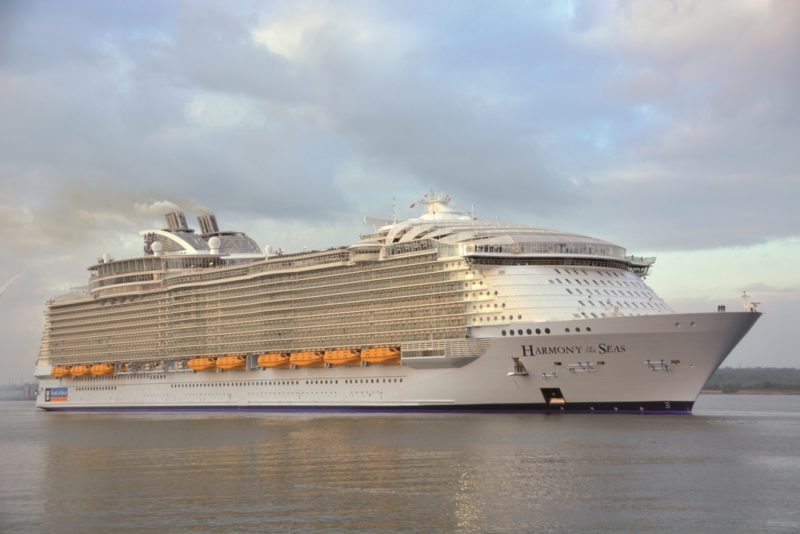

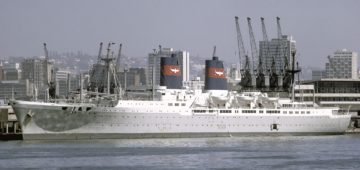


Comments
Sorry, comments are closed for this item